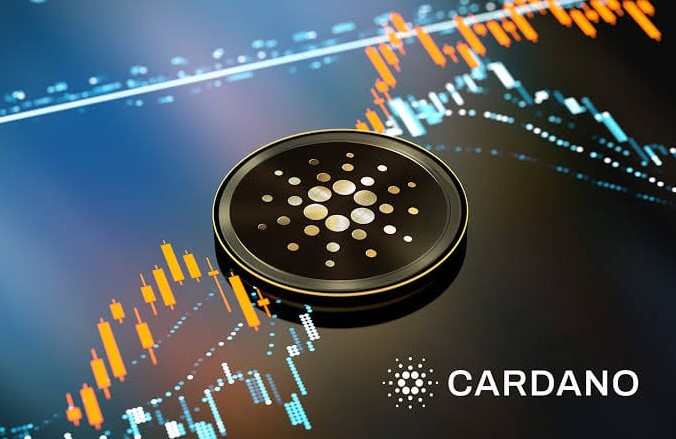
Origins of Cardano
Introduction to Cardano
Cardano is a third-generation blockchain platform that aims to provide a more secure and scalable infrastructure for the development of decentralized applications (dApps) and smart contracts. Founded by Charles Hoskinson, one of the co-founders of Ethereum, Cardano distinguishes itself through its scientific philosophy and commitment to peer-reviewed research.
History and Development
Origins of Cardano
Cardano was conceptualized in 2015 with a vision to address the scalability, sustainability, and interoperability issues faced by earlier blockchain platforms. It was officially launched in 2017 after a rigorous development process led by Input Output Hong Kong (IOHK).
Development Milestones
Since its inception, Cardano has achieved several significant milestones, including the release of its mainnet, Shelley, which introduced staking and decentralized governance. The platform continues to evolve through regular updates and improvements.
Cardano’s Blockchain Technology
Proof of Stake
Unlike traditional blockchain networks that rely on Proof of Work (PoW), Cardano utilizes a Proof of Stake (PoS) consensus mechanism. PoS allows participants to validate transactions and create new blocks based on the amount of cryptocurrency they hold and are willing to “stake” as collateral.
Ouroboros Consensus Protocol
At the core of Cardano’s PoS mechanism lies the Ouroboros consensus protocol, designed to ensure security and scalability while minimizing energy consumption. Ouroboros divides time into epochs and uses a secure leader selection process to achieve consensus.
Smart Contracts and dApps
Cardano’s platform supports the development and execution of smart contracts and decentralized applications. By leveraging its native programming language, Plutus, developers can create secure and reliable smart contracts tailored to their specific needs.
ADA Cryptocurrency
Purpose and Function
ADA is the native cryptocurrency of the Cardano platform, serving various purposes within the ecosystem. It can be used for staking, transaction fees, and as a medium of exchange for goods and services.
Distribution and Market Performance
ADA has a capped total supply of 45 billion tokens, with a significant portion already in circulation. Despite facing volatility like other cryptocurrencies, ADA has demonstrated resilience and maintained a prominent position in the market.
Cardano’s Impact on Decentralized Finance (DeFi)
Role in DeFi Ecosystem
Cardano plays a crucial role in the decentralized finance (DeFi) ecosystem by providing a robust infrastructure for financial applications. Its scalability and low transaction fees make it an attractive platform for building decentralized exchanges, lending protocols, and other DeFi solutions.
Decentralized Applications (dApps) on Cardano
The Cardano ecosystem is home to a growing number of decentralized applications spanning various industries, including finance, gaming, and healthcare. These dApps leverage Cardano’s advanced features to offer secure and efficient services to users.
Sustainability and Environmental Impact
Energy Efficiency of Cardano
Cardano is committed to minimizing its environmental footprint by employing a Proof of Stake consensus mechanism, which consumes significantly less energy compared to PoW-based blockchains like Bitcoin.
Sustainability Initiatives
In addition to its energy-efficient design, Cardano is actively involved in sustainability initiatives aimed at promoting environmental stewardship and social responsibility.
Community and Governance
Cardano Foundation
The Cardano Foundation is responsible for overseeing the development and adoption of the Cardano protocol. It collaborates with other entities in the ecosystem to ensure transparency, accountability, and sustainability.
Voltaire Governance Model
Cardano’s governance model, known as Voltaire, empowers ADA holders to participate in the decision-making process regarding protocol upgrades, funding proposals, and other governance matters. This decentralized approach promotes inclusivity and democratic governance.
Challenges and Future Outlook
Scalability
While Cardano has made significant strides in scalability with the Shelley upgrade, further improvements are needed to support the growing demands of the ecosystem. Ongoing research and development efforts aim to address scalability challenges and enhance network performance.
Competition
Cardano faces stiff competition from other blockchain platforms vying for dominance in the market. Projects like Ethereum, Polkadot, and Binance Smart Chain are continuously innovating and expanding their capabilities, posing challenges to Cardano’s growth.
Future Developments and Upgrades
Looking ahead, Cardano plans to introduce additional features and upgrades to enhance its functionality and usability. These developments include the rollout of smart contract capabilities, integration with other blockchain networks, and improvements to governance mechanisms.
Conclusion
In conclusion, Cardano stands at the forefront of blockchain innovation, offering a secure, scalable, and sustainable platform for decentralized applications and smart contracts. With its scientific approach, committed community, and ongoing development efforts, Cardano is poised to play a significant role in shaping the future of finance and technology.
Unique FAQs
- What sets Cardano apart from other blockchain platforms?
- Cardano distinguishes itself through its scientific philosophy, peer-reviewed research, and commitment to scalability and sustainability.
- How can I get involved in the Cardano community?
- You can join online forums, participate in meetups, or contribute to the development of the Cardano ecosystem through staking or building decentralized applications.
- Is ADA a good investment?
- As with any investment, it’s essential to conduct thorough research and consider factors such as market trends, project fundamentals, and risk tolerance before investing in ADA or any other cryptocurrency.
- What are the potential risks associated with using Cardano?
- Like any emerging technology, Cardano may face risks such as regulatory uncertainty, security vulnerabilities, and network disruptions. It’s essential to stay informed and exercise caution when interacting with the platform.
-
How does Cardano address scalability issues?
- Cardano employs innovative solutions such as the Ouroboros consensus protocol and layer-two scaling solutions to improve scalability and accommodate a growing number of users and transactions.